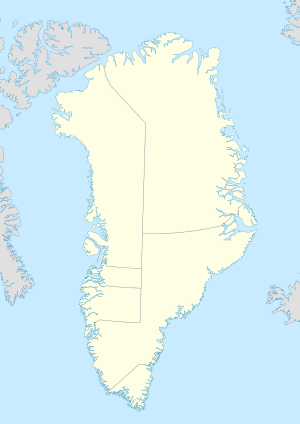Ivigtut
| Ivittuut | |
|---|---|

The cryolite mine in Ivittuut in 1940
|
|
| Location within Greenland | |
| Coordinates: 61°12′30″N 48°10′10″W / 61.20833°N 48.16944°WCoordinates: 61°12′30″N 48°10′10″W / 61.20833°N 48.16944°W | |
| State |
|
| Constituent country |
|
| Municipality |
|
| Abandoned | 1980s |
| Time zone | UTC-03 |
Ivittuut, formerly Ivigtût (Kalaallisut: "Grassy Place",) is an abandoned mining town near Cape Desolation in southwestern Greenland, in the modern Sermersooq municipality on the ruins of the former Norse Middle Settlement.
Ivittuut is one of the only places in the world so far discovered to have naturally occurring cryolite (Na3AlF6, sodium aluminum fluoride), an important agent in modern aluminum extraction.
The area was settled by about twenty farms of Norsemen, a district called the "Middle Settlement" by modern archaeologists from its placement between the larger Western and Eastern settlements. It is the smallest and least well known of the three, and no written records of its residents survive, for which reasons it is believed to have been established last (and abandoned first) of the three. Investigations show a presence after 985 and with occupation continuing up to at least the 14th century.
The town's cryolite deposit was discovered in 1799 and the veins of silver-bearing lead surrounding it were mined by the British engineer J.W. Tayler before the silver content was found to be too low to make the operation practical. Danish engineers began mining the cryolite itself in 1859 and in 1864 the Danish Kriolit Mine og Handels Selskabet was granted a monopoly on its extraction. These early mines simply processed the cryolite for its direct aluminum content and for sale to the Pennsylvania Salt Manufacturing Company, which used it to create caustic soda.
...
Wikipedia

